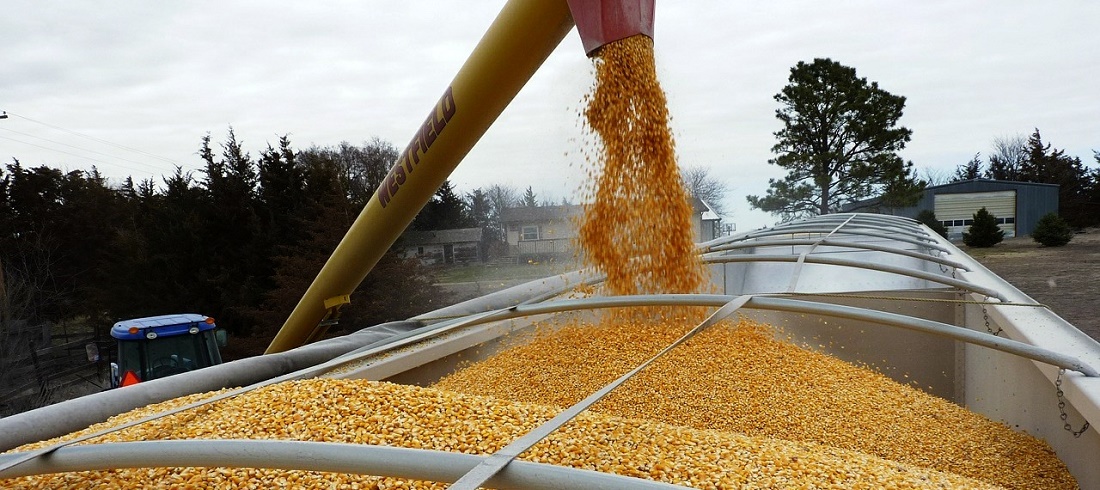
Drought reduces corn yields in Brazil
Aug, 27, 2024 Posted by Gabriel MalheirosWeek 202434
While the second corn crop, known as “safrinha,” exceeded expectations in some regions of Brazil, such as Mato Grosso, the same cannot be said for yields in other key corn-producing areas. In Mato Grosso do Sul, São Paulo, and Paraná, the final stages of the harvest have shown yields below expectations for the 2023/24 season, which was severely impacted by prolonged droughts.
As a result, the safrinha, which represents the majority of Brazil’s corn harvest, is expected to close the 2023/24 season with an 11.8% decline, dropping from 102 million tonnes in the 2022/23 season to 90.28 million tonnes, according to the latest projection from the National Supply Company (CONAB). This figure reflects a 7.2% decrease in productivity across the country.
In Mato Grosso do Sul, CONAB estimates a 36% drop in the harvest. In São Paulo, the state-run agency projects a 23% loss compared to the previous season, and in Paraná, a 12% decrease is expected.
Larissa Petcov Lucio de Oliveira, a farmer who planted 315 alqueires (1,525 hectares or 778 acres) of corn in the second crop in Buri, São Paulo, is among those whose crops were affected. She said that the low rainfall during the crucial period for crop development is likely to result in a 40% drop in productivity.
“There was a lack of rain during the critical phase for corn, the grain-filling stage. Between February and May, when the crop needed 500 millimeters of rain, we received only 300,” she explained.
The inadequate rainfall disrupted the entire planning for her second crop, which also includes wheat on her farm. “Due to this prolonged dry period, I couldn’t properly plant wheat. We had some late rain, but the wheat cycle is severely delayed. I’m not sure yet if I’ll harvest or leave it in the field for soil fertilization,” she added.
She also noted that if the crop remains in the field much longer, it could negatively affect the 2024/25 soybean harvest.
The following chart uses DataLiner-derived data to show the month-on-month progression of corn shipments from Brazil between January 2021 and June 2024. A demo is available upon request through the link below.
Corn Export Volume | Jan 2021 – Jun 2024 | WTMT
Source: DataLiner (click here to request a demo)
In Mato Grosso do Sul, the same climatic conditions were decisive in the losses seen in the safrinha corn. “We started planting in dry conditions, and the drought persisted throughout the entire cycle. It was a crop with very little moisture,” said Angelo Ximenes, president of the rural union in Dourados.
Due to the adverse weather, the harvest in the Dourados region yielded around 50 bags per hectare, far below the union’s expectation of 100 bags.
The harsh climate prompted the Federation of Agriculture of Mato Grosso do Sul (FAMASUL) to lower its corn production estimate for the state. Initially projected at 11.48 million tonnes, the forecast was reduced to 9.3 million tonnes in the latest revision. This figure is 34.7% lower than the 2022/23 harvest.
In Paraná, Edmar Gervasio, an analyst at the State Department of Rural Economy (DERAL), estimates a 15% loss in safrinha corn production. “There was a drought cycle and intense heat, especially in the northwest and west of the state at the beginning of the season, which led to reduced production,” Mr. Gervasio explained.
According to Ana Paula Kowalski, an expert at the Paraná State Federation of Agriculture (FAEP), production losses in some regions reached 29%. “The northern pioneer, north-central, northwest, and far west regions were significantly affected by the lack of rain,” she said.
She also anticipates a reduction in the summer corn planting area, with soybeans replacing corn due to increased production costs, though she did not provide specific figures.
The smaller safrinha corn harvest in these regions helped limit the drop in prices, which have been under downward pressure due to robust supplies in Mato Grosso and Goiás. “The crop failure helped to cushion the impact of the harvest on prices. In these regions, where production was lower, the decline in prices was much less pronounced,” said Paulo Molinari, an analyst at Safras & Mercado.
Ronaldo Fernandes of Royal Rural added that despite the lower production in these three states, the internal market is under pressure due to increased harvests in other regions. “In addition to Mato Grosso, we saw relatively larger production in the North and Northeast, which will yield 12.3 million tonnes this year,” he said.
Source: Valor International; click here to access the original text: https://valorinternational.globo.com/agribusiness/news/2024/08/23/drought-reduces-corn-yields-in-brazil.ghtml
-
Sugar and Ethanol
Nov, 21, 2018
0
Adecoagro invests R$21.2m in Brazilian mills
-
Meat
Sep, 28, 2022
0
Russia resumes beef imports from Brazil’s Mato Grosso
-
Shipping
Jun, 28, 2024
0
Global freight rises but shows signs of weakness in US
-
Fruit
Jul, 19, 2023
0
Brazilian fruits gain traction in emerging markets

